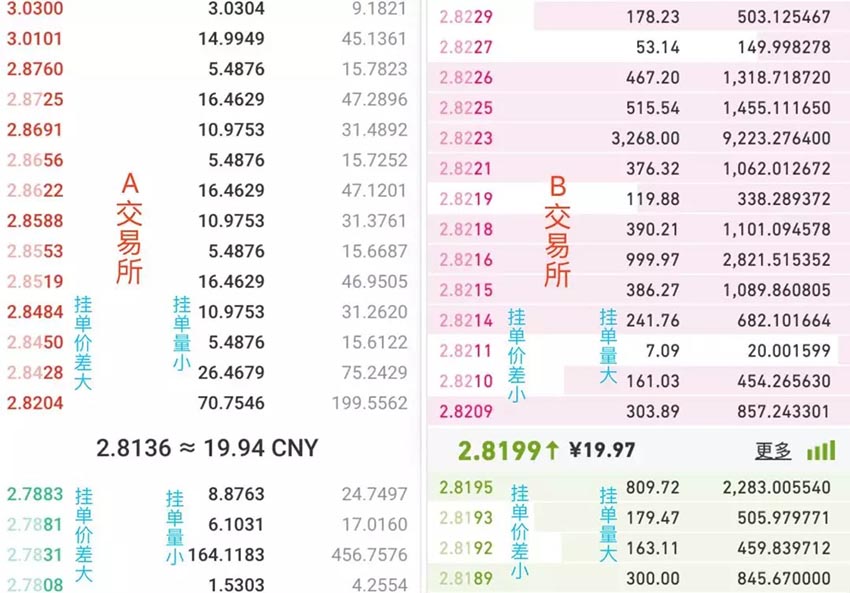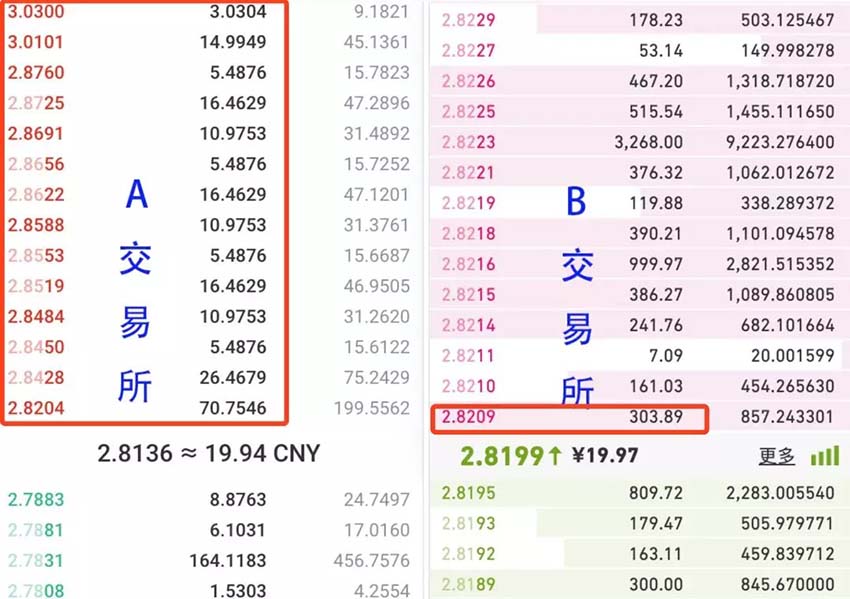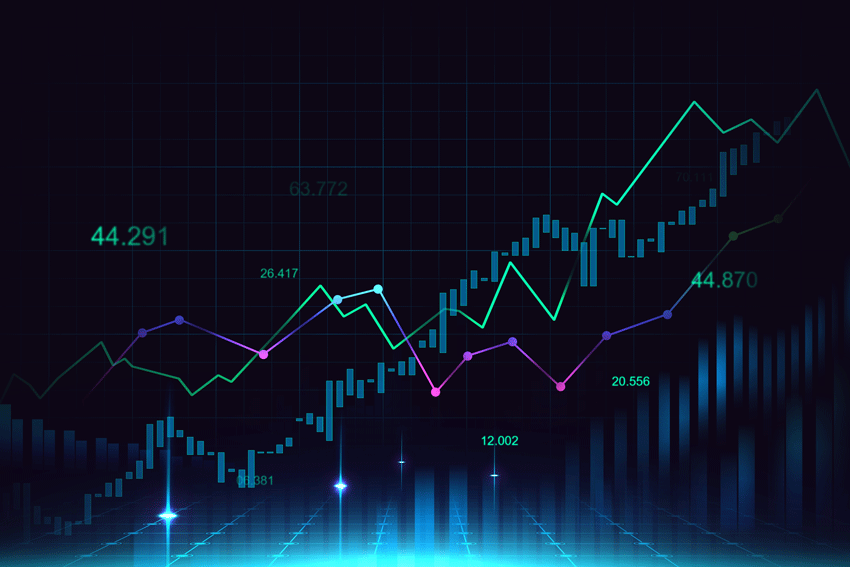When we choose a platform for cryptocurrency trading, the first thing we need to consider is the security and market depth. Generally speaking, the top trading platforms in the world can meet all the two features, namely good security and market depth.
Needless to say, the security is easy to understand. How about the market depth? How to measure the market depth? Let’s have a discussion on it in this article.
What’s Market Depth?
Market depth refers to the market capability of avoiding big fluctuations in currency prices when undertaking large amount of tradings. When talking about market depth, we usually refer to the market depth of a certain currency on a certain platform.
To understand the market depth, we need to discuss two indicators: the orders and the spread. A large number of orders and a small price spread indicate good depth.

For example, in the figure above, platform A is on the left and platform B is on the right. Obviously, the depth on platform B is good. It shows that on the B platform, the number of orders is large, and the spread between adjacent orders is relatively small, that is, the orders are dense. Therefore, when buying on the B platform, there will not be obvious pump and dump when buying and selling on the B platform, that is, easy to buy and easy to sell.
How to Measure the Market Depth?
Generally, two indicators are used to measure the depth of the platform, the spread and the orders.
Spread refers to the price difference between two adjacent orders. The smaller spread, the denser order prices, which indicate that the actual price of buying or selling is closer to the real market price.
The orders refer to the entrusted number which reflects the carrying capacity of the market. The larger orders, the better depth and the demand for large orders can be better satisfied.
What’s the Role of Market Depth?
When conducting cryptocurrency trading, we’d better choose the platform with good depth because there are two advantages: the currency price is relatively more stable and the cost is lower.
Currency price is relatively more stable
For instance, if you want to buy 300 EOS as shown in the figure below, try to compare the impact on EOS price after trading on platform A and platform B.

In the figure above, it’s obvious that the depth of platform B is better.
If you want to quickly buy 300 EOS on the platform A, you need to buy from price 1, price 2 and price 3, etc. until you’ve bought enough 300 EOS. Since the trading depth is not so good, the EOS price is pushed up after the trading is completed.
And if you quickly buy 300 EOS on the platform B, you can trade with only the selling price of 2.8209 (because the order amount at this price is 303, which is more than the purchase amount of 300). After completing the trading, the EOS price is stable without being pushed up.
Lower Trading Costs
For example: The following figure shows the trading depth of selling in platform A and platform B. If Mr. Black wants to complete the trading of 2000 EOS quickly, let’s compare the relevant trading costs on two platforms.

Trading on platform A
Mr. Black needs to buy 500 at the price of 20 and buy 500 at the price of 21, and continue to buy in this way according to the trading depth.
His total cost is: 20500 + 21500 + 22500 + 23500 = 43000 (3,000 more expensive than platform B).
After the transaction is completed, the price of EOS on platform A has been pushed up to 23.
Trading on platform B
Mr. Black buys 2000 directly at the price of 20, and his total cost: 20 * 2000 = 40000.
After the trading is completed, the price of EOS on platform B is still 20. Therefore, trading on the platform with good depth will result in much lower costs.
In one word, when we conduct trading, we’d better choose the platform with good depth so that we can complete the trading quickly with lower costs, and meanwhile the market will not be greatly impacted, either.

